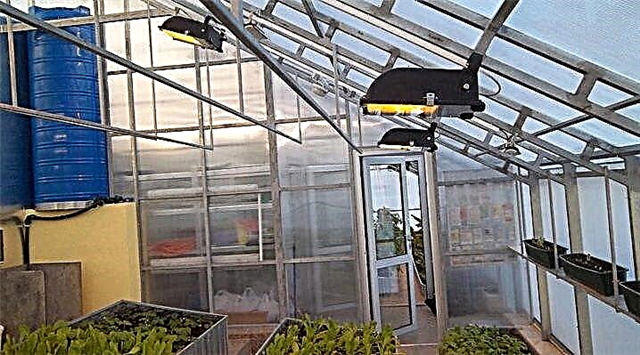Any construction can not do without connecting technologies based on binders. You can buy high-quality cement in Moscow and buy ready-made concrete in Moscow by contacting the company MSC-Region. But what if a small volume is needed or there is no possibility of a concrete mixer approaching? You should read this article, look for additional clarifying information, and do the kneading on your own. Composition of building mixtures is a completely accessible topic, in comparison with nanotechnology and other areas requiring persistent education.
Concrete Brands Overview
Concrete brand is the main indicator of its strength. The higher the numerical number of concrete, the more reliable and stronger the finished composition will turn out.
- M50–75 - an easy version of the cement mortar, used in interior finishing work, for screeding and as a grout for masonry,
- M100-150 - the so-called “skinny concrete”, is used as a screed for the floor, in the manufacture of paths and borders and in auxiliary works in construction,
- M200 - mortar for masonry, screed and plaster for interior and exterior use,
- M300 - a durable composition, mainly used in street construction.
To make a cement mortar of the required strength, it is not necessary to buy concrete of the corresponding brand. In the process of preparing the mixture, concrete is mixed with sand, changing the proportion. Thus, it is easy to obtain a cement mixture M100 or M200 from raw materials of the M400 brand.
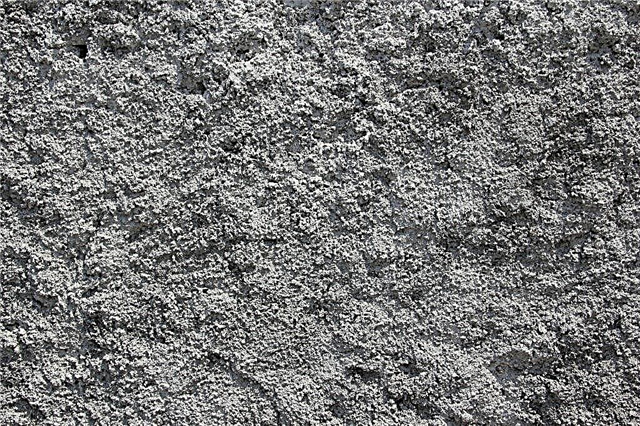
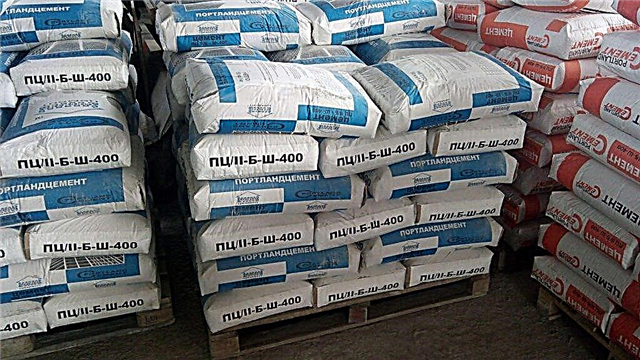
Necessary materials and tools for work
Its strength, technical and visual characteristics depend on the composition of the cement solution. The standard composition of the mixture consists of three elements:
- dry cement
- sand,
- water.
In order to change the quality of the composition, the following additives are used:
They affect the color of the coating, help make it more ductile and sticky.
In order to mix and lay the cement mortar, you will need the following tools:
- a bucket or a deep basin for stirring, corresponding in size to the volume of the mixture,
- construction mixer or drill with nozzle,
- spatula or spatula for spreading the mixture over the surface,
- mittens and glasses for safety.
All these tools will probably be found on the household by people who have been involved in repairs at least once. Otherwise, they should be purchased or borrowed from friends.


Types of solution
The type of cement mortar varies depending on the brand of cement, the composition of the components and the presence of plasticizer additives. By composition, two types of solution can be distinguished - using lime and sand. Consider the properties of each of them.

Cement-lime
The cement mortar with the addition of lime is distinguished by its ductility and adhesion, therefore it is most often used in plaster or when laying tiles.
The composition of the mixture includes cement, lime and sand in the proportions of 1: 1: 6 and 1: 2: 9 parts, respectively. To improve the ductility and stickiness of the solution, PVA glue, detergents, clay sand are added to it.
If quicklime is used, it should be extinguished by mixing with water. During the chemical reaction, a large amount of heat is released, so you need to protect your hands and face when working with lime.
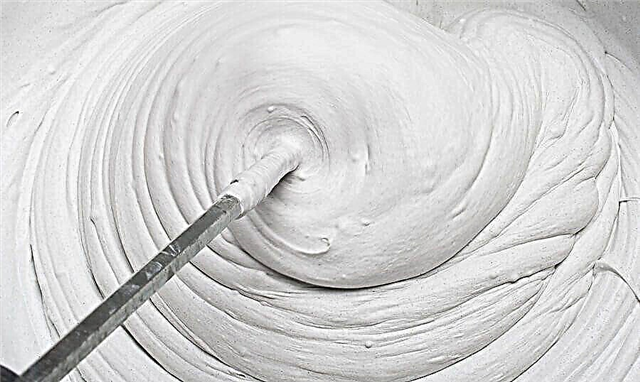
Cement-sand
Cement-sand mortar is the easiest coating option to manufacture. To knead it, take one part of cement in 6 or more parts of sand. The composition is suitable for outdoor and rough indoor work. Since it does not have additional additives, its plasticity and adhesion do not allow the use of the mortar for small plastering and tile work.
As plasticizers, improving the stickiness and elasticity of the material, liquid soap and PVA glue are used. Clay or quarry sand helps to make the composition more plastic. To clarify and improve adhesion, builders add slaked lime to the mixture, obtaining a cement-lime mortar.

Color Seam Additives
Color additives to the cement mixture serve purely decorative purposes. They are most often used when laying bricks to make seams more expressive and aesthetic.
Soot was used to give a dark color, but experience has shown that this component degrades the technical characteristics of cement. Today, salts and metal oxides are used for these purposes. Color additives can be purchased at hardware stores.


Mixing ratio
The ratio of the elements in the cement mortar depends on the scope of the mixture and the type of concrete. For example, if you want to obtain cement mortar M100 from concrete M400, the ratio of cement to sand will be 1: 4. Thus, it is easy to calculate what ratio is needed to get the right grade from any concrete.
How to make a cement mortar for different types of work (cement: sand):
- Stucco: 1: 5 with the addition of one part of lime,
- Floor screed: 1: 4 for the M500 brand, 1: 3 for the M400 brand,
- Brickwork: 1: 5 - M3, 1: 4 - M5, 1: 3 - M8. In this case, the brand of the finished solution should match the brand of brick.
The volume of water for the preparation of a liquid solution should not exceed 60% of the total volume. Usually it is 1-2 parts in proportion.
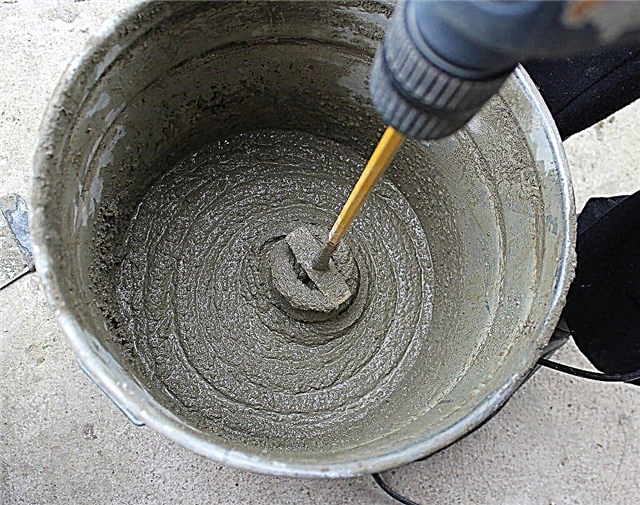
Drying time
The setting time of the cement slurry directly depends on the ambient temperature and the thickness of the coating. The thicker the screed layer and the lower the thermometer column, the longer the mixture will dry.
Consider the pour time under favorable conditions:
- 2–4 hours - setting of the solution,
- 12-24 hours - incomplete hardening of cement, you can walk on it, but finishing work is not recommended,
- 10-14 days - complete drying of the coating, after which you can begin to finish the surface with tiles or other material.

How to make cement at low temperature
The ideal temperature for pouring cement mortar is + 200C and higher. But such conditions are not always possible to create during the construction and exterior decoration of the building. At minus temperatures, the concrete mortar lumps, and the water in the composition turns into ice. This directly affects the quality of the coating.
In construction, there are several techniques that help to avoid damage to the cement mixture at subzero temperatures:
- Special anti-frost additives in the composition,
- Heated water and sand when mixing concrete,
- Electric heating coating,
- Shelter pouring awning and insulation formwork.
For masonry at sub-zero temperatures (up to -7 ° C) you need to use a cement mortar (in the ratio of cement to sand - 1: 4) or cement-calcium (1: 1: 6 - cement, calcium, sand). The solution should be densely plastic, that is, contain a small amount of water.


The use of concrete in home decoration
In the interior decoration of apartments and houses, concrete is used in three types of work:
- wall plaster
- pouring floor screed,
- installation of ceramic tiles in the bathroom.
The solution for home decoration should be sufficiently plastic and have good adhesion to the rough coating. Therefore, plasticizers and adhesive additives are necessarily added to it.

Useful Tips
- Choose a deep container for the solution so that when stirring it does not spill over the walls,
- Instead of grout for processing brick or tile joints, special grouts can be used, in which case, coloring agents for cement will not be required,
- A day after screeding, cover it with a film so that the coating is not damaged during the repair process.

Self-made cement mortar videos
How to mix concrete with your own hands:
Preparation of colored cement mortar:
The preparation of cement mortar does not require special skills and the presence of a large number of tools. A mixture for screed and plaster is easy to do with your own hands, observing the proportions and using inexpensive plasticizers. Thus, you can significantly save on the finished mixture and get a universal composition for different finishing works.
Types of cement mixtures
Depending on the composition and purpose of use, the solution is divided into brands:
- M150 and M200 - for screeds,
- M50, M100, M150, M75, M200 and M125 - for masonry,
- M10, M50 and M25 - for plaster.
All varieties differ in quantitative sand content and proportions. Changing the ratio of the main components allows the use of such a building material for various works.
Grade of a solution is an indicator of the strength of a structure built with its use. The proportions of the ingredients depend, as a rule, on what brand the cement mortar is needed. Often the cooking instruction is printed by the manufacturer on the packaging.
Of course, you can order the finished mass of the right brand (dry ready mixes for foundation, plaster or screed are currently being sold, in which you just need to add the right amount of water). But independent batching will save money.

Rules for determining the desired brand of sand-cement mass
According to the technology, it is required that the grade of the mortar correspond to the grade of the material used (brick, blocks). For example, if the masonry is built of brick of grade 100, then the cement mass should be M100. Subject to this rule, as a result, you will get a solid homogeneous brick structure.
In the event that the brand of material used is high, for example 350, then it is not worth striving for a match, as this will significantly increase the cost of construction. The generally accepted proportions are 1 part (for example, a bucket) of cement and 3 - sand (1 to 3). When preparing concrete for pouring the foundation, 3-5 parts of crushed stone are added to this proportion.
On sale there is a huge assortment of different types of cement, differing in brand, manufacturer, properties and shelf life. Portland cement, which is characterized by a high level of water resistance, frost resistance and strength, is especially popular among professional builders. It hardens well in almost any weather.

Rules for the preparation of the mixture
For manual batching, cement is recommended to be diluted in a metal or plastic container: trough, basin, old bathtub, bucket. For mixing, you will need a shovel, trowel, spatula or drill with nozzles. With large volumes of the prepared cement mortar (from 1 m3), it is advisable to use concrete mixers. All equipment and the mixing platform are prepared in advance, as are the input components. The viability of the cement base is 1-1.5 hours, the mixture is used immediately after preparation.
The sand is pre-washed and dried, you can not add wet filler - this leads to a violation of the ratio W / C. The characteristics of the cement-sand composition depend on the properties of the binder and the selected proportions (for verification of compliance, the factory brand of strength is divided by the number of fractions of sand). It is best to plant cement with clean water (melt, rain or drinking water is suitable), it is not recommended to take it from open sources. To give plasticity, the introduction of additives (liquid soap, lime, plasticizers) is allowed, but not more than 4-5% of the total binder.
The sequence of loading the components depends on the method of kneading: when manually first sand and cement are sifted into the container, then they are closed with liquid. When using a concrete mixer, on the contrary, water is poured into the bowl, then fillers. It is better to breed additives and impurities immediately, an exception is made only for reinforcing fibers. In any case, the cement mortar is mixed for no more than 5 minutes, during which time it should reach a homogeneous consistency. A properly prepared composition remains on the trowel or putty knife and flows smoothly when turned over; no lumps or undiluted particles are observed in it.
The ratio of fillers
The main measure is the proportion of binder. Depending on the purpose of the composition, the following proportions of the input components are used:
1. For the preparation of plaster: 1: 3, the W / C ratio does not exceed 1, it is recommended to dilute the composition in batches. When carrying out work indoors, the minimum grade of cement strength is M150, facade - M300. To give plaster plasticity, the introduction of lime is allowed (no more than 50% of the proportion of sand).
2. When mixing the masonry mortar: 1: 4, the binder strength grade is not lower than M300. Lime is introduced exclusively in slaked form and not more than 0.3 of the proportion of cement. The ideal W / C ratio is within 0.5, 50 g of liquid soap is added to give plasticity. Masonry compounds are prepared in strict sequence: first water is introduced into the container or concrete mixer, then fillers.
3. For foundation work: 1: 2: 4 (cement, sand, gravel, respectively), the proportion of water is taken equal to the volume of the binder. Portland cement from M400 and coarse-grained aggregate from hard rocks are used, the mixing is carried out in a concrete mixer.
4. When pouring a concrete floor screed, it is necessary to dilute high grade cement with sand, in a ratio of 1: 3, with a ratio W / C = 0.5. The composition should reach for the trowel and fill in small voids, it is better to knead it forcibly.
5. When ironing floors, a mixture of cement and sand is prepared in a ratio of 1: 1. Liquid glass or lime should be diluted in advance in water, with a ratio of not more than 0.1 to the proportion of binder.

When preparing concrete and compositions with various fillers, cement is added to the solution without mixing with sand, in all other cases it is advisable to sift them together. In addition to falling asleep with clearly measured proportions, the correct proportions are determined by the binder brand (not lower than the required, if its quality or freshness is doubted, its consumption is increased), sand cleanliness and dryness, crushed stone strength and flakiness (for concrete). The most difficult is to choose a water-cement ratio, it is recommended to use 85% water first, then gradually introduce the remainder.
The question often arises: how to dilute cement with liquid soap. This additive is very popular in private construction, it is the cheapest plasticizer. But the excess foam is harmful, it is better to wait 3-4 minutes for it to shrink and only then inject the cement-sand mixture (and - in small portions). This kneading time increases by approximately 5 minutes. The total proportion of any impurities (including coloring minerals) should not exceed 10% by weight of the binder, otherwise the quality of the prepared solution decreases sharply (adhesive properties are leveled).

Expert Advice
It is necessary to breed at an ambient temperature of +5 ° C. If possible, use a concrete mixer, this increases the uniformity and quality of the mortar. With automatic kneading, the loading sequence of the components depends on the size of the fractions: from small to large. The finished solution is unloaded and used immediately, the higher the strength grade of cement, the faster it sets. To improve performance, it is recommended:
- introduce frost-resistant or hydrophobic additives (relevant for concrete),
- when mixing the plaster, replace part of the sand with perlite (to increase the insulating properties),
- make a test batch to check the quality of the components,
- if possible use special dispensers.
Mixing Features
Before starting work, it is recommended to sift the ingredients together through a construction sieve, so the composition becomes homogeneous. It is better to mix cement with sand not with hands, but with the help of tools: a concrete mixer or a drill with a nozzle. It is desirable that the size of the fractions be within 0–2 mm; any impurities adversely affect the characteristics of the solution.Checking the sand for clay is very simple: just dilute it in a glass container with water, if muddy suspensions are observed - you should buy another. You should also determine the quality of cement: fresh wakes up through your fingers and has a light gray or greenish tint, there are no lumps in it.
To properly dilute a solution of these components, it is recommended to adhere to such a technology:
- Pour water into the container in an amount equal to cement (or in other required proportions). Part of the liquid is left; for wet sand, the W / C ratio is chosen slightly less than the normative.
- Dilute liquid soap or detergent in water. This step is optional, but such an additive improves the adhesion of the future solution.
- Pour half of the finely divided filler (or part of the sifted composition) into the container. At this stage, cement with sand should be diluted in a proportion selected taking into account the intended use of the mixture to be prepared and the relevant standards.
- Pour all the cement and turn on the concrete mixer or construction mixer. After two minutes of mixing, introduce the remainder of the sand.
- Check the consistency of the solution and add the remaining water in small portions as needed. A properly prepared mixture slides (and does not drain) from the trowel, when cut with a spatula there are no dry particles, but the drawn line does not blur.
- Introduce modifying additives (if necessary) and mix everything again.
Violation of the proportions leads to cracking of the solution after solidification or its spilling. It is important to select them in advance, calculate and buy the required amount of material. The viability of the finished solution lies within 1 hour, during which time it must be fully used for its intended purpose. It is not permissible to re-dilute the mixture frozen in the tank.
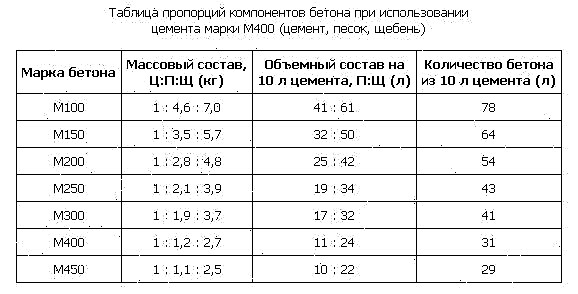
General recommendations for the preparation of solutions
Conventionally, all cement mortars can be divided into: plaster (with a strength grade from M10 to M50), masonry (from M50 to M200, respectively), used for pouring screeds or as a basis for concreting building structures (M150 and M200). The selected proportions significantly affect this indicator, in particular, each additional fraction of fine-grained filler reduces it. For example: if you dilute Portland cement M400 with sand in a ratio of 1: 4, then the final grade of the solution will be M100. The less cement, the looser and more porous it will be.
There is a requirement: the mortar used to connect brick or concrete must not yield in strength to the brand of the product itself. Ideally, they coincide, then the constructed structure will be monolithic and homogeneous. This rule applies mainly to masonry mixtures, it is also desirable to take into account such characteristics as frost resistance and water resistance. That is, when installing the foundation blocks in the joint solution, it is advisable to introduce hydrophobic additives.
Recommended mortar proportions for plaster mixes
When carrying out internal work, cement from M150 will be required, for facing the facades a higher grade is required - M300. Proven proportions for wall plastering are 1: 3. In this case, it is recommended to mix sand with cement before mixing and gradually dilute the resulting dry mixture with water. The result is a homogeneous mass that does not flow down from the trowel when tilted at 45 °, the V / C ratio is chosen to be? 1. To increase plasticity, lime can be diluted and quenched in the added water (0.2–0.3 parts of the amount of cement), such a solution is applied more finely. To give the plaster thermal insulation properties, the sand is partially replaced with perlite.
Recommended proportions of mortar for flooring
For screed, fresh Portland cement of high grade (from M400) is used. The classic proportions for filling the floor are 1: 3. The W / C ratio does not exceed 0.5, the solution should stretch and fill the smallest voids, but be without bubbles. To obtain the desired uniformity, it is kneaded with a construction mixer. Components must be sifted. Due to the small amount of liquid, the solution sets quickly, it must be used within half an hour after kneading.

Recommended mortar ratio when concreting the foundation
In this case, for the construction of the foundations of small buildings, Portland cement is purchased at least M200, for buildings it is better to choose M400 or M500. For the preparation of volumes over 2 m3, a concrete mixer is required. Optimum proportions for the foundation: 1: 2: 4, coarse-grained filler (gravel or crushed stone from hard granite) is introduced into the composition, it is undesirable to add less durable rocks, they reduce the final grade of concrete strength.
The quality of the components used plays a huge role, it is allowed to breed them exclusively with pure drinking water (not sea or from open sources). The proportions are strictly observed - not more than 0.5 of the volume of cement. There should be no dry lumps and undissolved components, but also peeling of the liquid and sedimentation of crushed stone in the concrete mixer - too. Therefore, concrete should be mixed no longer than 10–20 minutes, it is unloaded and poured without delay, despite the setting time of 1 hour.
Excess sand in relation to cement in the mortar for foundations of more than 2: 1 is allowed only on dry and stable soils for unloaded buildings. It is impossible to mix moist finely and coarse aggregate and cement, this leads to a violation of proportions, as well as the presence of clay impurities and debris. Therefore, sand and gravel must be washed and dried before mixing. Portland cement for the foundation needs the freshest, it should not be purchased earlier than 2-3 weeks before concreting.
The main components of the cement mortar are water, sand and cement
A cement mortar is a viscous mixture, with the help of which any parts are fixed to each other.
The solution can be used in monolithic construction, but the use of a higher grade of cement is necessary here.
The basis of any cement mortar is a combination of essential ingredients:
- actually cement itselfwhich acts as an astringent,
- sand, acting as a placeholder,
- water is used to dilute solids in order to give them a certain consistency.
In addition to the presence of these basic components, the quality of the cement mortar depends on their quality. There are no certain strict requirements for water other than its purity. It should not contain unnecessary impurities, dirt, oil, etc.
If there is no water supply system at the construction site, then the best option would be purchased water in stores.
Most experts are inclined to use river sand, which is characterized by the absence of impurities, stones and clay. The use of quarry sand is also allowed, but after preliminary cleaning and washing.
But sea sand is completely unsuitable for use. The fact is that it contains a large amount of salt, which is difficult to wash out of the composition, which negatively affects the binding of all components of the mixture.
The main element of the solution is cement, on the quality of which the quality of the whole mixture depends in many respects. There are many brands of cement, ranging from 100 to 600.
The larger the number, the greater the load the frozen solution can withstand, which is a very important indicator in various construction areas.
For the foundation, higher grades of cement will be needed - M400, M500, etc. But for the laying of facing bricks, for plastering walls and other similar works, the brands M100 and M200 are quite suitable.
Proportions of cement mortar
I would like to deal with the types of cement mortar itself. They come in several forms:
This classification is a consequence of different amounts of liquid, which is used to dilute the dry ingredients of the solution.
Fatty solution is obtained by using a small amount of water. On the one hand, the mixture sets very quickly, but on the other hand, after hardening, the mixture may crack over time, which negatively affects the life of the building.
A lean solution, in contrast, is prepared with plenty of water. The characteristics of the finished solution leave much to be desired, and the setting time of the mixture increases significantly.
The best option is a normal solution in which harmonious proportions of all components - cement, sand and liquid - are observed. After hardening, such a solution does not crumble and does not crack, which makes construction objects quite durable.
The most common solution is a combination of cement and sand (1: 3). Want to know how to knead such a solution? There is nothing complicated about it. Having taken three parts of sand, we mix them with one part of cement in a separate container.
Mix thoroughly so that the dry mix becomes the same shade. Then you can start adding water, while mixing the mixture with a shovel or electric drill with a nozzle.
The finished solution should resemble thick sour cream in consistency, so after mixing the dry ingredients, water is added in small portions. On average, the volume of fluid leaves half the volume of cement, but this is an approximate proportion.
It is also worth noting the fact that the brand of the finished cement mortar and the brand of cement are different concepts.
The grade of mortar is a grade of cement divided by the volume of filler used, i.e. sand.
So, to knead a solution of brand M100, we need the following components:
- cement of the M300 brand,
- three buckets of sand.
But this does not mean that the cement mortar brand M100 is prepared only from cement marking M300.
If M400 cement is available, then for the preparation of the solution you will need four buckets of sand (1 to 4 ratio). If the cement is M500, then five buckets (1 to 5 ratio), etc.
We have already said that cement mortar is used for a wide variety of construction purposes. Accordingly, and proportions of sand and cementas well as other components of the solution, will be different for each specific application. Let's consider each of them in more detail.
How to knead for the foundation
The foundation is the determining moment in the construction of any construction project, on which the operational period directly depends. That is why it is very important to strictly observe the proportions of the mortar for the foundation.
A quality foundation should not only consist of traditional mortar components - sand, cement and water, but also crushed stone. It should not be limestone, because this does not increase the strength of the finished solution. Also, do not replace crushed stone with expanded clay, gravel and other similar materials.
In most cases, cement of grades M400 and M500 is used to make the foundation. Strength is extremely important for the foundation of the building, so the use of high grades of cement is justified.
As for sand and water, here the requirements are absolutely identical with those that apply to the usual cement mortar used for plastering walls, bricklaying, etc. Water should not contain impurities, oils and foreign objects.
Wall panels for the bathroom are quite simple to install, they are quite durable, can easily cope with temperature differences and have a long service life. This is all about this wonderful stuff.
Using a self-leveling screed for the floor, you can minimize all the difficulties of leveling it. Here you can find out about the different types and costs of self-leveling screeds.
Quarry sand gained its wide distribution due to its low cost and excellent natural qualities. Follow the link to get acquainted with the technical characteristics of this material.
Sand should be washed and sifted so that there are no traces of clay, stones, mud formations, etc. in it.
The proportions of sand and cement for preparing the mortar for the foundation are as follows - three buckets of sand are taken per cement bucket.
As for crushed stone, in most cases it is identical to the amount of sand. If you measure everything with buckets, then one bucket of cement M400 or M500 will need three buckets of rubble and three buckets of sand.
Water must be diluted carefully.so as not to make the solution too liquid. It is very important here how dry sand we have available, i.e. if it is wet, it is advisable to dry it before mixing with the rest of the ingredients.
The composition of the mortar for floor screed, how to knead
The proportions and consumption of cement mortar for screed are determined on the basis of the brand of cement available. The minimum allowable grade of mortar for floor screed is M 150 (dry mix), but quite often used brand M200.
In general, a sand-cement or concrete screed can be used as an independent floor covering in certain rooms. As a rule, these are garages and other non-residential buildings. In most cases, the screed is used as the basis for linoleum, parquet and other coatings.
Cement mortar for floor screed includes three main components - sand, cement and liquid.
The concrete screed is also supplemented with rubble, but it is practically not used for residential premises, so we will not consider it.
The proportions of the cement-sand mixture
The proportions of such a sand-cement mortar are quite traditional. Cement and sand are taken in a ratio of 1 to 3. As for water, it should be twice as much cement.
For example, if we make cement mortar M150 from cement, then one third of it accounts for a third of sand and 0.5 water. In order to make the M200 solution, 0.4 parts of water and 2.8 parts of sand with the same amount of cement are needed.
Preparation and ratio of the components of cement - lime mortar for masonry facing brick
Cement mortar for bricklaying is not much different from mortars used for other construction purposes. Only the proportions, some additives differ, but the main components remain the same.
As a solution, cement and lime can also be used as a mixture. The proportions depend on what brand of solution we need. For instance, to make a mortar of the M100 brand, we need cement of the M300 brand and 3.4 parts of sand.
If M500 cement is available, then to obtain such a solution we need 5.3 parts of sand. In principle, the formula for calculating the grade of the solution, i.e. cement grade divided by the amount of sand.
Plasticizer - is it possible to add milk of lime or PVA
Many experts advise adding milk of lime to these components, which helps to increase the plasticity of the mixture. So, to obtain a solution of brand M25 we need one part of milk of lime and cement, as well as four parts of sand.
The cement mortar for masonry facing brick includes some additions in the form of plasticizers. They are used instead of lime, which positively affects the results of the work.
So, the addition of a small amount of these additives can prevent the appearance of cracks, improves adhesion, etc.
The proportions are approximately the following: no more than 0.3 parts of plasticizers are used for one part of cement. In this role, PVA glue in a cement mortar can act. In addition, you can make a plasticizer for cement mortar with your own hands.
To do this, we will need the following materials: shampoo, liquid soap and diluted laundry detergent. Proportions may vary. For example, for a 50 kg bag of cement, about 200 ml of liquid soap is used.
For more details on how to prepare a mortar for bricklaying, see the video:
What to add and how to make your own mixture for wall plastering
A mortar for plaster is a combination of traditional components of a cement mortar, as well as certain additives that improve the properties of the mixture. Such additional materials may be clay or lime, depending on the work performed.
Cement mortar for wall plastering can contain a wide variety of proportions.
One to six parts of cement may be from one to six parts of sand. But the optimal ratio is one to three, with the addition of the right amount of water.
Cement-lime mortar for plastering includes more diverse proportions. Here are some of the most common: 2 parts of lime and 8 parts of sand, or 2 parts of lime and 9 parts of sand.
This amount of material is calculated from the ratio of one part of cement. Many are interested - how to prepare a cement-lime mortar for plaster? The most common method is to pre-mix sand and cement.
Only then is milk of lime added, which is made by mixing water and lime dough.
The use of liquid glass
Water glass is a mixture of sodium silicate and water.
In cement mortar, it It is applied for the following purposes:
- to improve waterproofing,
- to increase performance screed strength
- to increase the heat resistance of the surface when plastering,
- to fill cracks and other voids.
Liquid glass cement mortar is prepared using the following proportions:
- for waterproofing purposes - 4 parts of cement, 4 parts of sand and 1 part of water glass,
- for closing cracks - 3 parts of cement, 1 part of sand and 1 part of water glass,
- to increase the fire resistance of surfaces - 4 parts of cement, 1.5 parts of sand and water glass.
As we see the proportion of water glass in cement mortar directly depends on the scope of the finished mixture. As for the proportion of water, it should not exceed 25 percent of the amount of water glass.
The proportions of cement and sand in the preparation of cement mortars are one of the defining points. The characteristics of the finished mixture will depend on observing the correct ratio, so you need to know such nuances even before the construction stage.



